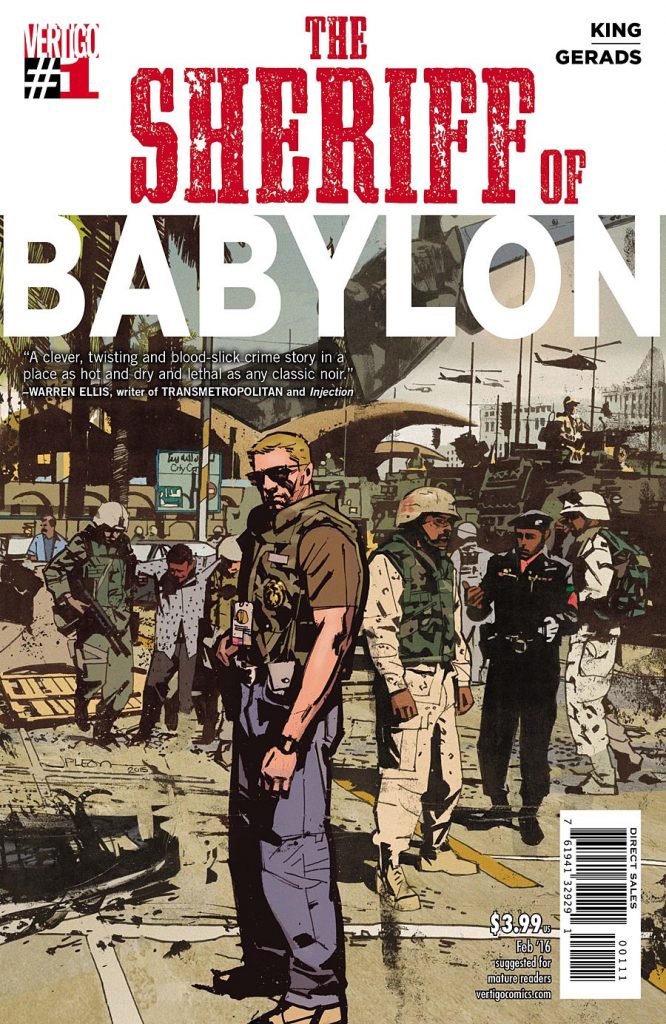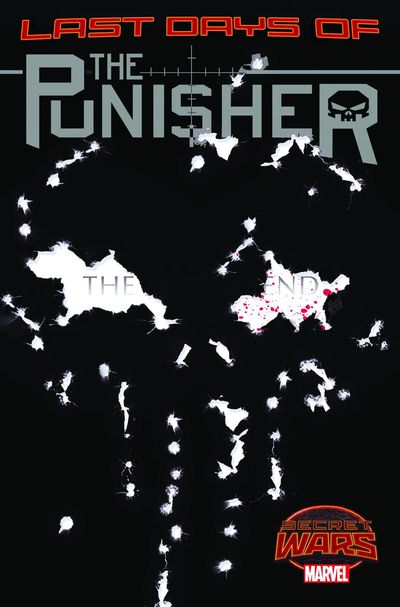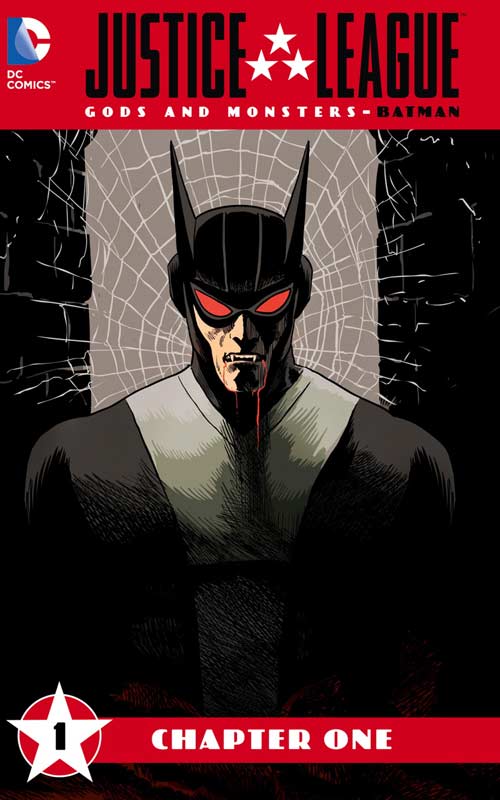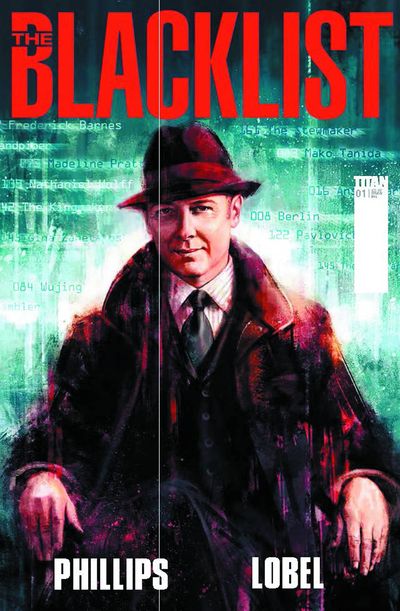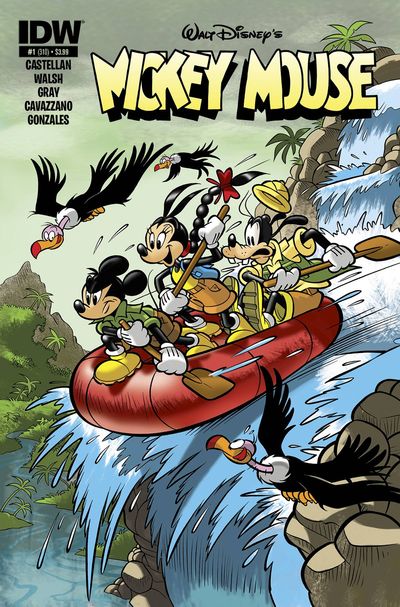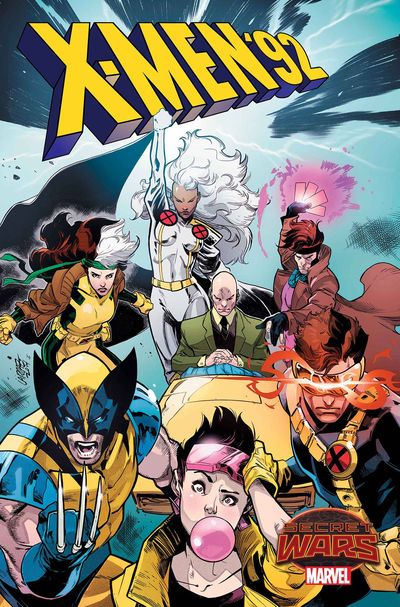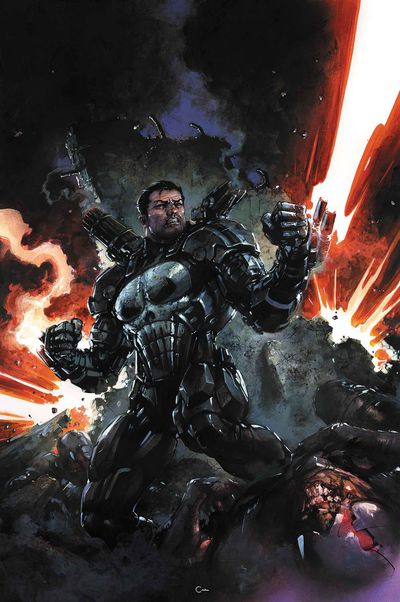 Some interviews are so sensitive that you might get a call from an unknown number asking you to take it down for the sake of national security. We hope we’re not getting another one of those calls this week, as we got a chance to talk to the top spy-fi and espionage comic book writer in the business, Nathan Edmondson. Nathan has written Grifter for New 52, as well as a recent Ultimate Iron Man series for Marvel (now in trade paperback). For creator-owned work, Nathan’s The Activity and Jake Ellis series continue to draw attention from real military and fans of spy fiction, and more books are in the works including being tapped by Ubisoft to develop a Splinter Cell comic series. We conducted the following interview over a secure line.
Some interviews are so sensitive that you might get a call from an unknown number asking you to take it down for the sake of national security. We hope we’re not getting another one of those calls this week, as we got a chance to talk to the top spy-fi and espionage comic book writer in the business, Nathan Edmondson. Nathan has written Grifter for New 52, as well as a recent Ultimate Iron Man series for Marvel (now in trade paperback). For creator-owned work, Nathan’s The Activity and Jake Ellis series continue to draw attention from real military and fans of spy fiction, and more books are in the works including being tapped by Ubisoft to develop a Splinter Cell comic series. We conducted the following interview over a secure line.
DIGBOSTON: Hi Nathan, Thanks for taking the time today. We’re just now caught up with The Activity, a special ops book you do with artist Mitch Gerards. What’s the inspiration for such a real world espionage book?
NATHAN EDMONDSON: Mitch and I are fascinated by this nearly untouchable world, and when we found a side of it never seen before in fiction, we knew we wanted to tell stories about it.
The attention to detail on the missions are really what grabs me with this book in particular. How important is the tech to the book?
Tech is second to soldiers and story, but technological superiority is part of what makes a group like this so effective on the battlefield.
We do our best not to distract with the tech, but to give a real-world feel of the gadgets and gear employed by Tier 1 operators on missions.

The Activity - Mitch Gerards
I have a relative that dealt with special ops military, he’s pretty tight-lipped about his time there, but I understand you have had some great support from ex-military and special forces members.
How do you gain access to the right people you need to help you tell an accurate story? And who or what is at U.S. Army Entertainment Liaison Office?
The armed forces has offices that are set up to provide information and support to the entertainment world. We have worked a bit with the Army’s office, but most of our direct research comes from relationships we’ve forged with individuals who have or who continue to serve in the Special Operations community. In the back of the trade you’ll see a list (though names are changed and much information withheld) of some of those who have given us support.
We are careful, however, not to disclose information that would compromise any of these individuals.

A Comic Book Fan gets to pick the Mission Codenames! - The Activity - Mitch Gerards
This is a very different flavor of book from your other series, as you are not only showcasing the heroes on the ground with direct action, but also dealing with the structure of the whole operation including international cooperation.
At some points a team member or a team might disagree with the orders from on high—but ultimately carries out the mission. Other missions may get scrubbed or not go as planned. Is your Activity team balanced well? Will there be any roster changes coming up?
If you’ve read issue 11, you know there are some changes stirring within Team Omaha. In the real world, part of what makes a Special Missions Unit team effective is they grow together and train together as a team so that they can trust one another fully and completely on the battlefield.
[READ MORE at DIGBOSTON.COM]


